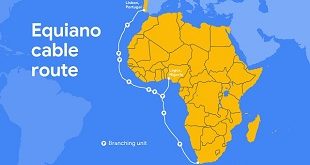
Nairobi, Kenya | Xinhua | As the effects of climate change such as scarce rains and drought unfold in Kenya, the east African nation is warming up to alternative crops that were initially neglected to boost food security, with traditional staple crops facing increased threats.
Maize and rice are among Kenyan staple crops that are increasingly facing threats due to effects of climate change.
For maize, erratic rains have disrupted production for the last five years, with the crop also facing threats from diseases like lethal necrosis disease and pests like fall armyworm.
Production of rice has equally been affected by floods as much as erratic rains, making Kenya rely on imports from Asia.
And as the staple crops face climatic challenges, agriculturalists from private and public sectors have identified cassava as a crop that can boost Kenya’s food production amid climate change.
Like maize and rice, cassava is mainly grown by smallholder farmers across the east African nation, thus its production would not be harder or require a reinvention.
“Kenya is taking bold measures to entrench production of cassava as a way to boost food security amid climate change,” Ann Nyaga, the chief administrative secretary with Ministry of Agriculture, said in Nairobi, capital of Kenya, recently.
Kenya has identified cassava as a good alternative or booster to rice and maize because it is a good source of carbohydrates, said Nyaga. “With production of maize and rice going down due to climate change, cassava, which is resilient to drought, offers hope amid the challenging times.”
According to her, the crop can be grown in arid and semi-arid areas as well as in arable lands with little rain.
“Cassava also has wide usage for both humans and animals and in industries. It can be used as human and animal food and in starch production needed for industrial use and also to make ethanol,” she said.
Kenya has come up with a National Roots and Tuber Crops Strategy that provides a road map for development of roots and tuber crop, said Nyaga.
Agnes Wang’ombe, an agriculture lecturer at the University of Nairobi, said that besides semi-arid areas, cassava grows well in western, eastern and coastal parts of Kenya. And Kenya picked on the crop because it is the third largest source of carbohydrates in the tropics after rice and maize.
“This crop is highly adaptable to various regions and is highly tolerant to drought and capable of growing in marginal soils thus does not need fertilizer unlike maize,” she said.
According to her, over the years, Kenya had failed to tap into cassava growing due to a number of reasons, among them diseases like cassava mosaic disease and lack of quality planting materials.
Francis Wayua, a food scientist and technologist at the Kenya Agriculture and Livestock Research Organization (KALRO), said even as Kenya shifts to cassava, it must embrace climate smart technologies to curb losses during production and after harvest. These include targeting the right time to harvest, planting cuttings that are resistant to pests and diseases and appropriate harvesting and storage technologies.
“Our target is to increase production of cassava so that we reduce the maize deficit by 14.7 million bags by 2024,” said Lusike Wasilwa, the head of crop systems at KALRO, noting that Kenya experiences 20-30 percent shortage of staple crops.
Kenya’s agriculture sector is one of the key economic boosters, contributing 26 percent to the country’s economy.
*****
Xinhua
 The Independent Uganda: You get the Truth we Pay the Price
The Independent Uganda: You get the Truth we Pay the Price



